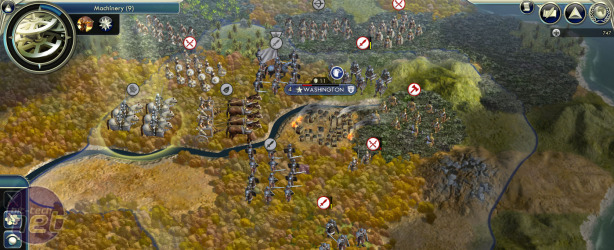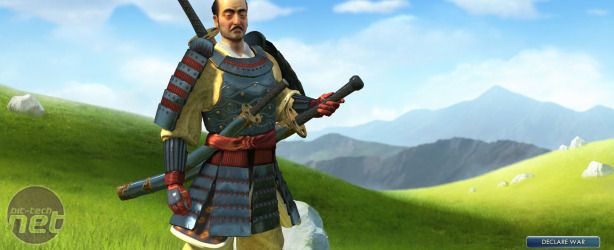Civilization V Review
Publisher: 2K GamesPlatform: PC exclusive
UK Price (as reviewed): £39.99 (incl. VAT)
US Price (as reviewed): $49.99 (Excl. Tax)
The last time I checked, I’d clocked up 47 hours with the press edition of Civilization V, not including the many moons spent fiddling about with preview code and so on. It's fair to say it's as addictive as ever, sinking the hooks into your mind and refusing to let you leave for more than a few minutes at a time. The 'just one more turn' factor has caused untold numbers of arguments and it's back with a huge vengeance in this, the fifth full-on proper version of the grand old history-'em-up.
If you're unfamiliar with the premise of Civilization, it's a tile-based strategy game that involves taking a, well, civilization from the dawn of time right up until the post-modern age with big stompy robots gouging out big chunks of the landscape with lasers. On the way, you'll encounter other nations, of which there are 18 in the vanilla, non-DLC-enriched version of the game, who'll either help or hinder your progress.
There are a number of ways to win. You can crush all opposition using supreme military power, build a spaceship and colonise Alpha Centauri before anyone else or become so culturally advanced that you can just 'art' people to death. Ok, you actually build something called the Utopia Project, but bashing Montezuma over the head with a painting is a more amusing image.
In essence, Civ is the same as it ever was. If you've never played one before, all of the changes discussed from now on will be meaningless, so just rest assured that it’s a good game, look at the pretty pictures and then go buy yourself a copy. However, series veterans will want to know why they should finally uninstall the brilliant fourth game after so many years. One word should do it: hexes.
The most radical change has come in the form of altering the basic grid of the game from squares to hexes, which in practice adds a whole new layer of strategy to the combat. Also, only one unit (generally) can occupy a hex at any one time, so the military side of things is much more interesting than it has ever been. Firaxis has gone on the record that the 1994 strategy classic Panzer General has heavily influenced the combat redesign and it shows, with frontlines ebbing and flowing like you'd expect in a hex-based strategy game.
What all this means is that, unlike in Civ IV, you won't be avoiding combat at all costs purely because of the drudgery of the super stacks. The number of units needed for effective combat is reduced massively and it becomes more about getting the best use out of them, playing to their strengths and so on, rather than just piling them all together and lumbering about the map in a big pile of pointy spear death.
It's a radical change in a series that generally only does small, incremental ones, but it works fantastically well. The new hex grid even makes territorial borders and landscape look smoother and more realistic too. While the visuals might be the most obvious change from Civ IV, and impressive they are too, nothing has so fundamentally changed the experience of playing Civ as much as the new hexes have. It's difficult to think how they could have been done any better.
The military side of things is also altered by the way vital resources are now dealt with. No longer can one iron mine help spawn an unending supply of swordsmen, nor can one pasture help you build a mass of mounted units. If you have one coal mine, for example, it might only give you 4 coal units to use, and with buildings such as factories requiring them as well, you have to think about how you want to use them. Build four ironclads to patrol your coastline and your infrastructure might suffer due to a lack of production, as you can no longer build factories. It's a delicate balancing act, but one that is very well implemented.

MSI MPG Velox 100R Chassis Review
October 14 2021 | 15:04












Want to comment? Please log in.